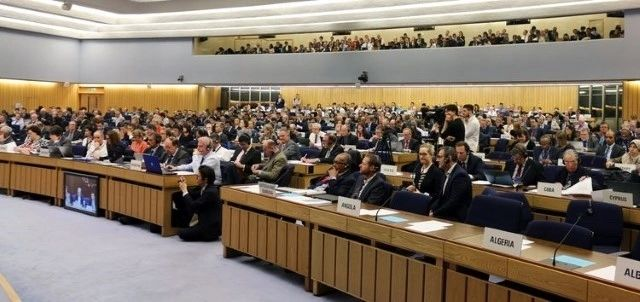Maritime Sustainability: Are we doing enough?

IMO MPEC 72nd session
However, there are also other options available when it comes to the circular economy. One option is a cross-industry collaboration where players from different industries use the same approach to address the issue together. Furthermore, cross-supply chain collaboration makes it easier to identify the areas where the maritime industry can save money and resources and in the end contribute to decarbonization and circular economy.
The aviation industry is one of the front-runners when it comes to the circular economy. One of the methods they are working with is leasing where manufacturers lease out parts to the airlines. An example of this could be manufacturers that lease their turbines and takes care of the maintenance. This method does not only save the airline time and money but also contributes substantially to the circular economy because the manufacturer also takes care of reusing the whole material in the end.

Several airlines are currently testing the use of Biofuels & have implemented extensive use of circular economy for aircraft maintenance
The aviation industry can also be used for inspiration when implementing a circular economy because it is one of those industries that are good at recycling. According to an article from November 2018 by “the balance small business”, currently, 80-85 percent of an aircraft is recycled which was less than 50 percent only a few years ago. AFRA (The Aircraft Fleet Recycling Association) aimed at increasing this number to 90 percent by the end of 2016.
A final and important question is whether or not it is only the shipping lines or also other stakeholders that must contribute in order to reduce GHG emissions. The answer is that shipbuilders, equipment manufacturers, insurers, bankers, and investors in shipping companies and ports are just as responsible for contributing to the reduction of GHG emissions. It is a joint collaboration and according to an article in May last year by ICTSD (International Centre for Trade and Sustainable Development) there are many among of the above-mentioned stakeholders who are already advocates of action to mitigate climate change.
So, there is a general consensus in the maritime industry when it comes to implementing a circular economy and decreasing decarbonization. The methods and technologies are already available and a lot of inspiration can be found in the aviation business. Therefore, it is debatable if the goal of reducing GHG emissions by 50% by 2050 is ambitious enough – and if the maritime industry could reach this goal even earlier.
About the author
ReFlow Maritime is based in Copenhagen, Denmark and offers consultancy and digital services on sustainability and circular economy to maritime stakeholders.
For more information: www.re-flow.io








